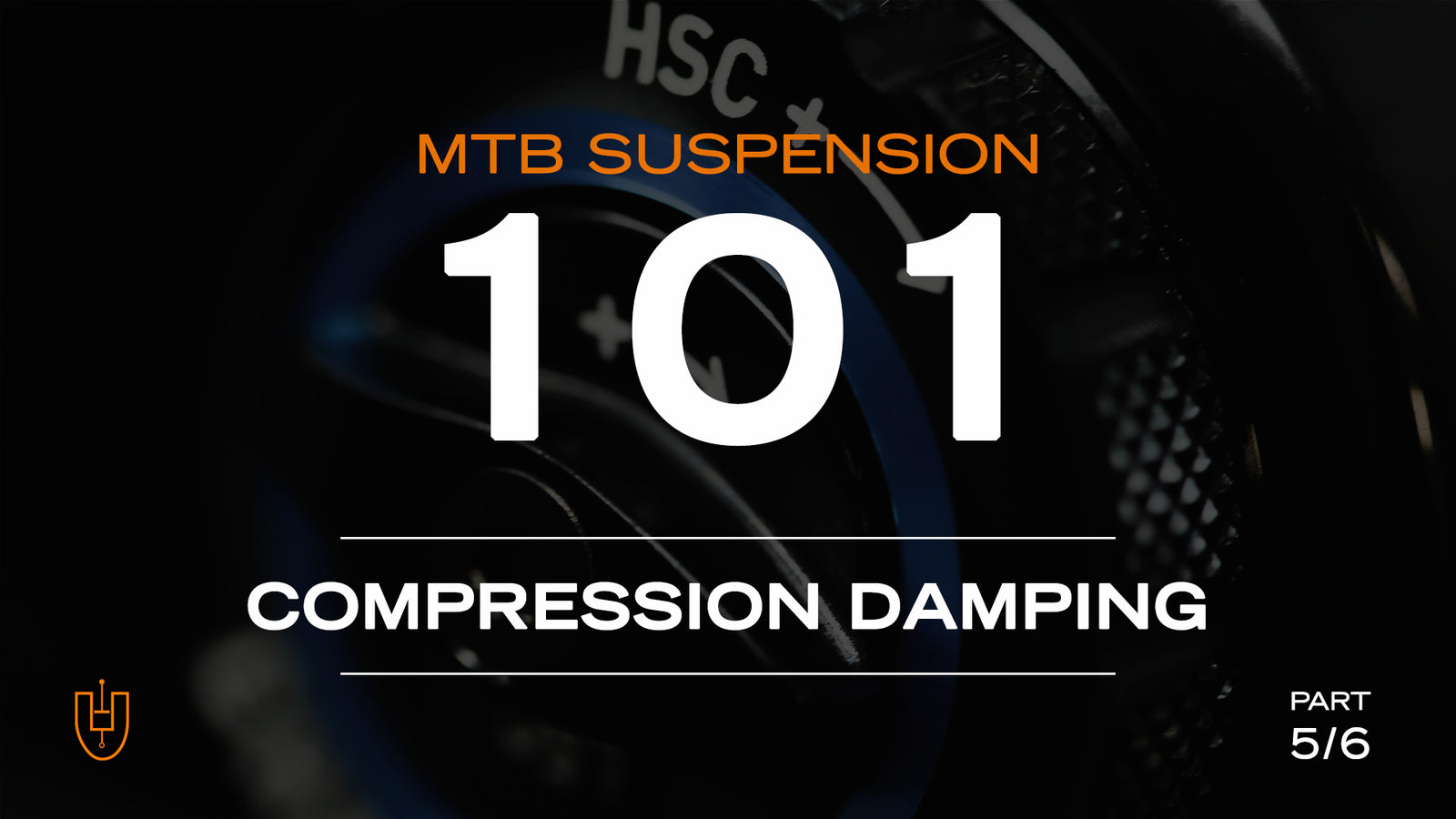MOUNTAIN BIKE SUSPENSION 101: Understanding Compression Damping (Part 5 of 6)

What is compression damping?
As mentioned previously, compression is typically the first movement where the shock or fork is compressed from obstacles encountered on the trail.
Much like how rebound damping controls the rate of your suspension’s return to its original state, compression damping controls the rate at which your fork or shock compresses under force, and how it reacts toward obstacles.
Compression damping is used to help keep your fork or shock from blowing through quite as much of its travel, giving you more control of your bike. The "more control" comes from a few things:
- When you use less travel on big compressions, the geometry does not change as much, keeping the bike feeling more consistent and predictable. Particularly with the fork, this
- By reducing the distance that the suspension travels using compression damping (rather than the spring), some energy is dissipated that would otherwise be stored in the spring and returned to you shortly afterwards. This translates to getting bounced around less.
- Because the amount of energy stored in the spring is reduced, the peak spring force is lower - believe it or not, compression damping (within realistic limits) can actually reduce peak forces experienced by the rider as compared to a system with no compression damping.
Though the spring is what allows the rider and the wheel to move relative to one another, which facilitates softening some of the blows as well as getting back into your original position, constantly diving through the travel may be rather uncomfortable too. By changing/tuning compression damping you can control the rate at which the suspension compresses in response to an impact, adjusting it to suit your riding style and the type of impacts your bike will encounter.

Decreased compression damping (holes toward fully open) will feel softer and more supple. It’ll respond more freely to bumps, but also move around more under body movements, pedaling/braking and under hard compressions at speed. Very light compression settings that feel great over small bumps at low speed may also feel uncontrolled when taking big hits at higher speeds.
Increased compression damping (holes toward fully closed) will feel stiffer and more supportive, providing additional resistance without having to increase your spring rate or add more air to your shock.

A specific type of compression damping also helps limit movement under certain circumstances, such as bobbing as you throw down pedal strokes. This is often known as ‘lockout’ or a “pedal platform” or “climb switch”. A lockout lever is present on some forks and shocks, and aims to increase pedalling efficiency by providing force to push against even when the suspension isn't moving, so less energy is being absorbed by the suspension. While the name of it suggests that compression damping is closed off rigidly, very few shocks or suspension forks these days have a “true” lockout, and will still be able to push a valve open to allow movement if you forget to ‘unlock’ it at the start of a trail (something we’ve all done before). While riding hard with a shock in the climb mode isn’t ideal for performance, on modern shocks it also usually won’t damage it.
Externally adjustable compression damping can have a few different forms.
On forks, external compression adjustments will most commonly be a dial that offers a range of adjustment and ‘clicks’, from lots of compression damping to very little compression damping, and everything in between. Some may have a lockout also. Certain gravity-oriented forks have both high- and low-speed adjusters (the basics of how those work is covered in part 4 of this series), but many forks have only one compression dial.
On shocks, it's a similar situation, where some units will have high- and low-speed compression adjusters, some have preset levels (usually 2 or 3 positions - firm for climbing, open/soft for descending, and sometimes an intermediate position), some just have low-speed compression adjusters, and others don’t have any compression adjustment at all.
Next:

